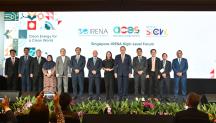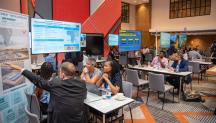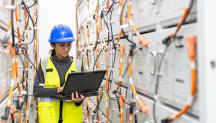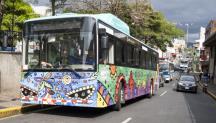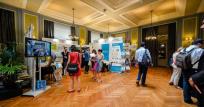

Europe Showcases Renewable Energy Progress at EU Sustainable Energy Week
Newsletter
EU Sustainable Energy Week gathers leaders from across renewable energy landscape
Key players throughout Europe have emerged as leaders in the ongoing global energy transition. But the work to address the challenge of climate change and accelerate the use of renewable energy is not just being carried out by national governments, it is also by ordinary people, entrepreneurs, local authorities, businesses, NGOs and European institutions. One of those European institutions, the European Commission, recently convened the European Union Sustainable Energy Week (EUSEW) in Brussels, Belgium, where IRENA participated as a strategic partner throughout the event.
Launched in 2006 by the European Commission, the EUSEW is organised by the Executive Agency for Small and Medium-sized Enterprises in close cooperation with Directorate-General for Energy. Featuring 64 sessions and more than 50 networking activities, EUSEW is organised to spread awareness of how to use energy more sustainably, build a low-carbon economy based on renewables and develop a strong, united approach to sustainable energy use.
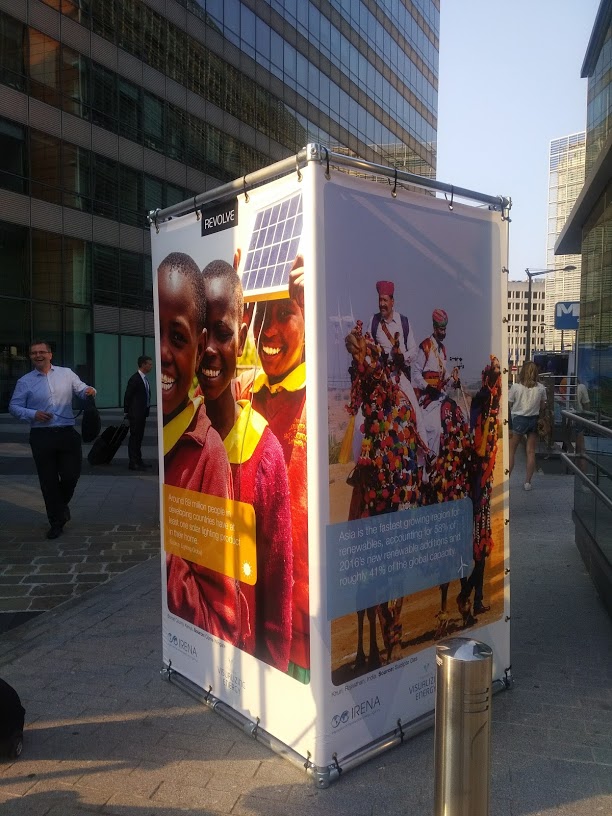
Photos from IRENA’s photo competition on display outside the European Commission in Brussels, during EU Sustainable Energy Week.
At this year's EUSEW, IRENA had a significant presence, organising two policy sessions, engaging with conference delegates at the IRENA booth and participating in a high-profile exhibition, Visualizing Energy, where the Agency displayed the winners from its 5th Anniversary photo competition in an inter-active exhibition outside the European Commission.
Innovation in renewable energy policy and regulation
The deployment of renewable energy in the EU has been driven by policies that contribute to an enabling environment for attracting investments. As deployment has grown and technology matured, renewable energy policies have adapted to changing market conditions.
In IRENA’s session on Rethinking Energy: Innovation in Renewable Energy Policy and Regulation, participants shared experiences from the design and implementation of policy instruments to support deployment in EU countries, with a focus on innovative policy designs to address market-specific barriers. In particular, the session looked at the proliferation of renewable energy auctions and electricity market design in the European context.
Auctions
Renewable energy auctions have been increasingly adopted globally, due to their ability to deploy renewable electricity in a well-planned, cost-efficient and transparent manner. The main strengths of auctions lie in their flexibility of design and potential for real price discovery.
Recent auctions have been resulting in competitive prices globally. The factors behind those prices were analysed in IRENA’s latest report on renewable energy auctions. In the EU, as was explained by IRENA's Diala Hawila, prices resulting from auctions are consistently falling across various technologies:
- In Germany, prices fell by almost 30% between 2015 and 2017;
- In Denmark, solar was awarded at USD 19.19/MWh premium over spot price; and
- Denmark, Germany and the Netherlands, have achieved record-breaking prices in offshore wind.
As was discussed in the EUSEW session, the decrease in prices reflects the falling cost of technology in the competitive environment spurred by the auction. However, there are country-specific factors that play a major role in the variations in individual auction results, including:
- Country-specific costs (such as cost of finance, labor, land) and conditions such as renewable energy resource availability;
- Investors’ confidence related to the presence of a conducive environment including the credibility of the off-taker, periodicity of auctions, increased confidence and lessons learnt from past auctions;
- Other policies aimed at supporting renewable energy development such as clearly set targets, fiscal incentives (e.g. tax credits, exemptions, accelerated depreciation), grid access and priority dispatch; and
- Auction design elements pertaining to trade-offs between the resulting price and other objectives (e.g. socio-economic development objectives, project size, strictness of compliance rules, developer remuneration profile, etc.).
Electricity markets in Europe
In 2015, in an effort to maximum benefits from cross-border competition and allow decentralised electricity generation, the European Commission began a consultation process on the establishment of a electricity market. However, markets are currently not well positioned to integrate large shares of variable renewable energy in Europe. It was in this context that IRENA shared its latest work on Adapting Market Design to High Shares of Variable Renewable Energy. Presenting IRENA’s work on market design, Salvatore Vinci flagged three key recommendations:
- Adapting short-term (day-ahead and intra-day) markets requires improving their temporal and spatial granularity, increasing the detail of bidding formats, and strengthening the link between energy and reserve markets;
- Adapting balancing markets (designed to maintain system stability and reserves) involves redefining traded products, recognising the contribution of variable renewables to grid stability and avoiding dual-imbalance pricing;
- Long-term mechanisms, which guide the expansion of power generation according to the strategic views of governments, should allow mature renewable technologies to compete with other generation technologies, by ensuring that support and capacity mechanisms take environmental externalities into account and minimise distortions in short-term and balancing markets for electricity
Is the 2030 EU renewable energy target of 27% ambitious enough?
IRENA’s second session in the EUSEW policy conference programme focused on another timely topic in Europe — the setting of EU-wide renewable energy targets.
In its “Winter Package” released in November 2016, the European Commission proposed a 27% renewable energy target for the EU by 2030. Early reports from the committee in charge of reviewing the European Commission proposal at the European Parliament point at the possibility of increasing the level of ambition to as much as 35% by 2030.
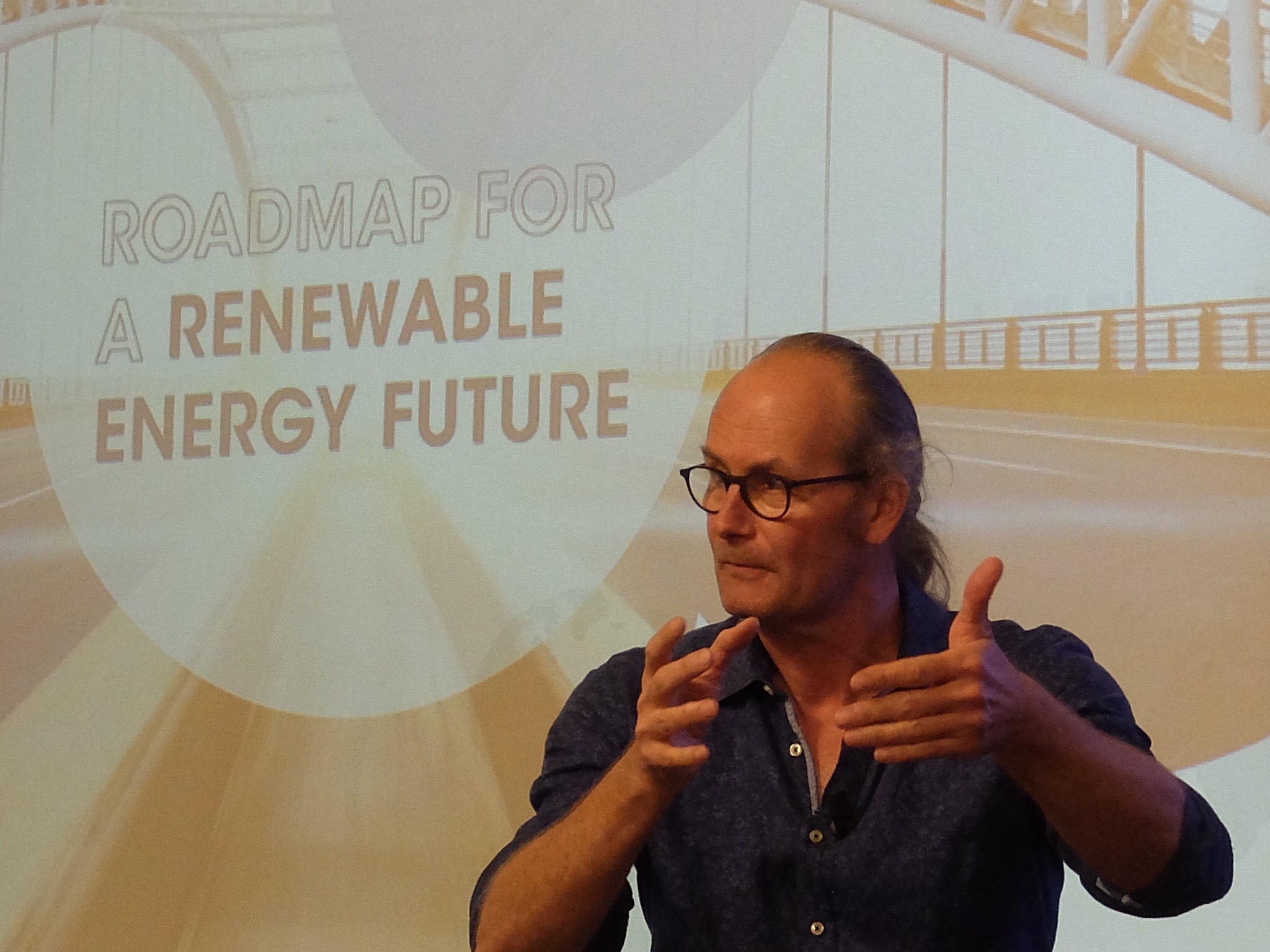
MEP Claude Turmes of the European Green Party (Luxembourg) discusses potential for ratcheting up EU renewable energy targets.
At the recent EUSEW, IRENA's Luis Janeiro shared some of the Agency's preliminary findings assessing the renewable energy prospects of the European Union by 2030. The aim of the study is to provide an open platform for EU Member States to assess at an aggregated level the impacts of their national renewable energy plans and options. IRENA’s assessment is based on a deepened analysis of existing REmap studies for 10 EU Member States, augmented and aggregated with additional analysis for the other 18 EU Member States.
Draft results show that existing national renewable energy plans up to 2030 would result in an EU-wide renewable energy share of 25% in the gross final energy consumption (the Reference Case). IRENA identified several renewable energy options in each Member State which would increase the EU-wide share of renewables beyond both the reference case and the proposed 27% EU target. These RE options can be found in the electricity, transport and heating and cooling sector.
The presentation of the preliminary findings provided the basis for a lively panel discussion on the issue of targets — with representatives of the European Commission, 2 Member States (Poland and Germany), and a Member of the EU Parliament. The chief take-away from the ensuing discussion was that while targets are critically important, they are not enough: targets need to be supported by strong policy actions to accelerate deployment.
